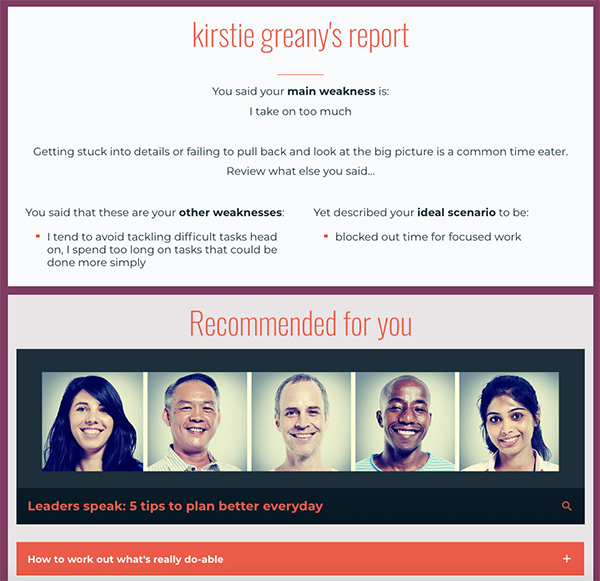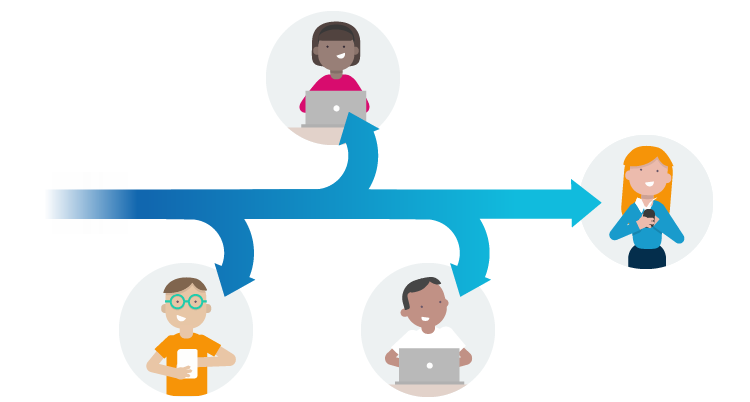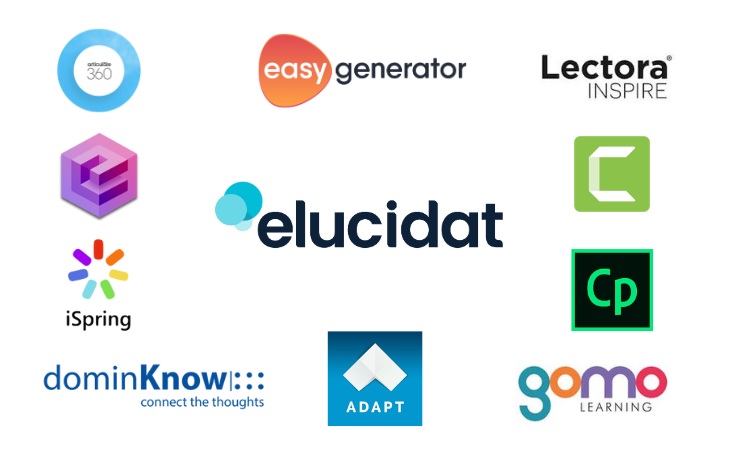How to build a winning blended learning strategy
11 minute read
Traditionally a combination of online and face-to-face learning, blended learning is about implementing the learning strategies that deliver the most impact, on a budget, at scale. This is great for a remote and globally spread workforce. But how do you develop and implement a successful, modern, blended learning strategy? Here, we delve into the benefits and importance of blended learning and outline 5 must-do steps that will help your learning team make the most of all available learning activities.

Why blended learning is important
Not only is it possible for a single learning initiative to have elearning and instructor-led components, but it’s often better than using only one approach or the other. By taking the best attributes of both approaches and applying them in ways that maximize their respective benefits, learners can be more engaged, learn more, and learn in less time.
This is no different when it comes to an online blended experience. Most of the instructor-led elements can easily be taken online. Learning technology has come a long way and this is now absolutely possible.
With a tweak or two even workshops can be taken effectively into the digital world. Here’s an example:
Imagine a conventional one-day workshop for managers on Handling Difficult Employees. Usually, this would take managers away from their desks for a full day. Two hours would be used to bring participants up to speed with the terminology and background knowledge. And then the rest of the day would be taken up with doing things around hypothetical situations that may, or may not, apply to all of the participants.
An online blended approach to this same event could see the managers do all of the terminology and background learning via elearning. This elearning could include video and activities to demonstrate to the managers how important this training is. Perhaps the elearning would also include activities where managers could practice some of the skills. It could have a questionnaire asking the sorts of situations the managers are most likely to encounter or feel least prepared to face. These could feed through to the facilitator, who could then tailor the next online steps around these pain points. The workshop instructor-led elements could be brought in using a combination of video conferring and collaboration tools.
When the managers attend the final online workshop – which is only half a day because the participants are already enthusiastic and primed – they can spend their time practising soft skills customized to their needs. This is liable to stimulate conversation and to leverage the learning, as learners ‘compare notes’ on their real-life challenges and exchange what has or hasn’t worked for them in the past.
A good practice following the course would also be to provide additional online interactive resources to help them through tough employee situations that they may face.
It’s easy to see that the blended online model gives a customized experience that is just as, if not more, efficient, comprehensive, and powerful.
What makes a successful online blended learning program?
First, it’s important to note that everyone’s version of a ‘great’ online blend will look a little different. What’s right for one group of learners won’t be for another. The same goes for the content involved, the business goals, or the technology available. Whatever your circumstances, there’s going to be a blend that’s right for you – it just takes a little planning to get there.
As a general rule, the best online blends will always:
- Take a people-centered approach – they put the learner first and consider what they really need to do, not just know.
- Embrace the technology available to create the optimal learning experience.
- Find ways to create human connections and shared experiences in the digital environment.
- Be engaging enough to encourage learners to keep returning. Digital resources have longevity – why not make the most of that?
What are the benefits of blended learning?
- Future proofing: COVID-19 has forced us to embrace remote working more than ever before, and it’s likely to remain a popular option in the future. Having online learning resources is crucial to supporting teams who work at distance, whether from home or in different parts of the world.
- On-demand content: Going digital means learners can access information whenever and wherever they need it.
- Save on time and cost: Flying trainers around the world to deliver face-to-face training isn’t great for those on a budget. When combined with the travel and attendance time involved (both the trainer’s and the participants’) it’s clear that an online blend is a time and cost efficient option.
- Make the most of data: A digital approach offers the ability to gather and track more data, giving you the confidence of knowing who has done what, when. A quick feedback sheet at the end of a face-to-face session can only tell you so much; an online blend, on the other hand, will let you discover more. You can find out how learners are interacting with your learning, and even use spaced assessments to see what information has been retained.
5 steps for building a winning blended learning strategy
Blended learning is not a new term. In its basic form, it means using multiple modes of learning to meet an end outcome. Traditionally, this has meant a combination of online and face-to-face interventions or self-paced, independent learning and synchronous, group learning.
Many turned to blended learning models when elearning became more mainstream (then on CD-Rom) and the costs of face-to-face workshops didn’t seem to stack up. The elearning sandwich emerged, where designers would pull out the theory and introductory content into an elearning module delivered ahead of a workshop, then have a more utilized workshop event, followed by some further elearning or online assessments to help the key points “stick.”
But did this approach to blended learning make the best use of online and face-to-face learning activities? Did it work for all learners? And is it the most successful approach to engage modern workplace learners? We think blends can do a lot better than that.
We’ve outlined some must-do steps to implement a successful, modern, blended learning strategy.
For details on your wider corporate learning strategy, see our guide on how to build a successful digital learning and development strategy guide.
1. Online learning vs. face-to-face learning – be super clear on the power of your modalities
The best blended learning and development strategies tap into the highest value opportunities offered by the different modes of learning, and don’t waste the opportunities presented. So, which mode is best for what?
Having a clear list of the benefits of online vs. face-to-face learning will help guide your team and strategy. Here are some guidelines.
5 benefits of face-to-face and group learning
- Conversational: participants can discuss, share stories, ask questions
- Collaborative: participants can work together in real-time on tasks and activities, and learn from one another
- Exploratory: participants can try out physical tasks, talk to people in the organization, explore the physical spaces of the organization
- Roleplaying: participants can test out conversation, presentation, facilitation and coaching skills with body language at play, and get feedback
- Coached: facilitators and experts can guide and coach participants, support them, recap points or push them further as needed

It’s worth noting that virtual classrooms, video conferences and online group work also lend themselves to many of the above.
5 benefits of elearning in the workplace
- Empowering: opportunity for workplace learning and development is the #1 reason people want to work at an organization. Technology puts learning and development in the hands of your end users and can offer them freedom around how and when they use it.
- Measurable/Flexible: with learning analytics available within most modern learning tools, digital learning enables you to track employee engagement with learning, shares, drop-off points, user comments and lots more.
- Connected: xAPI learning technologies enable you to connect the dots between all kinds of resources, experiences and activities that make up an individual’s learning journey and guide them from one relevant piece to the next to make learning continuous.
- Always available: people learn on the fly, in the moment, on their commute – basically when they can or when they want to. Digital learning is always on and can be delivered in bite-sized pieces that allow it to be used flexibly.
- Personalized: modern learning technologies enable you to produce personalized or adaptive learning solutions that target an individual’s role, needs and skills gaps, in their own localized language.

A personalized report from an online diagnostic
To explore more about the strengths of elearning, take a look at how to make enterprise elearning a success.
2. Review existing face-to-face learning with an extra critical eye
Review a face-to-face workshop you already have in place, critically. With the benefits of group and coached learning in mind, consider:
- The costs. Add up the travel time, facilitator time, room overheads, materials, productivity down-time.
- The content.
- What is maximizing the group and coach time? (e.g., elements that involve roleplay, group critique, physical practice or exploration, body language, story sharing, in-depth collaboration, experiential or psychological learning approaches).
- What isn’t making good use of group and coach time? (e.g., learning that’s specific to the individual and their role or context, personal diagnostics and reflection, theory and principles, non-experiential learning).
- The length. Is it packing in too much? Are you expecting users to take away more than they can realistically think over and apply? Would it be better to focus on one key performance improvement area and make it a truly memorable/changing experience, to get more return?
- The feedback. What do users say about it? What do they do that’s different after it? What do managers notice differences on the ground? Many users favor face-to-face as they love the social time and focus – but does the learning stick and convert into positive action? (ROI).
3. Experiment with new blended learning concepts – mix it up
Modern learners seek and expect answers to their questions and problems in the moment. 96% of people turn to their phone in moments of need. But they also expect the answers to be useful, relevant and personalized to them and their context of need, giving digital content just 7 seconds to decide if it’s for them or not.
The most successful learning strategies are people-centered. They home in on providing:
- Practical, useful, personalized resources that help people in those moments of need
- Meaningful experiences that engage hearts and minds and support individuals to make changes in areas that need it, or will add impact to what they do/how much they get out of what they do
So, with your learning design team, test out some alternative blended learning concepts to meet a specific goal and audience needs. This could be reworking the classroom analyzed above or another performance goal that needs attention.
- Focus in on what the learning activities and resources need to DO (i.e., what will be useful to help people on the job and in moments of need?). What will help people practice and explore or experiment with (new) skills? What will help them grasp what good and great look like?
- Consider what kinds of activities and resources will help the audience(s) get there – on their own and in groups or pairs. Where does it make the most sense to get people together? Does it make sense to utilize coaches/mentors or managers? What can be done virtually and online?
- Play around with some different combinations. Go more digital on one and more face-to-face on another. Where’s a good middle ground? Make some mindmaps to explore different ideas.

4. Consider scale, reach and budget for blended learning options
A successful blend works for individual learners, but it also needs to make sound business sense and a solid return on investment.
Assess the cost per head of different blended options. Remember that blends that support learning over a longer period of time, in shorter, focused interventions, are more likely to bring about performance changes than “one hit wonders.”
Are users remote or globally spread? Physical events are costly, and come with a high carbon footprint when you have to reach lots of remote audiences. Consider how you can utilize digital learning to its max, host an online virtual event for the masses if you need to do one, and then support local action-learning groups, and/or virtual or local coaches to discuss and take learning and sharing forward.
Don’t feel you have to have a face-to-face element in your blend. Virtual classrooms, online discussions, videos, elearning and webinars are components of modern blends.
5. Assess the skills and tools you have or need in your learning team
For those making their first steps into blended or digital learning, you might need to bring in some new skills and tools into your learning team or outsource to get what you need.
These handy free guides can help guide you:
Checklist for creating a great online training program
- Capture your needs. Start by understanding who your audience is, the purpose of your project and what will make it a success. Our capture guide will help with this stage.
- Engage your SMEs and stakeholders across the business. Get them involved as early as possible to support your project.
- Break your content down into manageable chunks and think about each chunk’s purpose – do they encourage reflection, offer a chance to practice, or deliver a tutorial?
- Create an engaging flow. Take each chunk and think about the journey you want to take learners on. What will motivate them at the start? Can you offer choice over the route they take or does the experience need to be linear? What would deliver a powerful call to action at the end?
- Apply best practice online learning design principles as you create your online learning. Check out our Elearning Best Practice 101 course for tips on this.
- Choose your tech. Plan out the technology you need for each section of your learner journey. What will work best for your learners? What tech stack do you have available? Can you harness other channels within the business, such as messaging applications or your intranet? What data do you want to collect?
- Finally, plan your launch – it’s just as crucial as the content. Think like a marketing and communications team (or get them involved if you can!) and work out how best to promote the program. Can you launch it in a way that lets learners answer the question ‘what’s in it for me?’
Final thoughts
As with any design approach, we recommend testing out new blended learning design concepts and tweaking them until you get it right. If you have an existing course, be it face-to-face or online, break it down into smaller chunks and play with the format – even if it’s mixing up how one part is delivered. See if giving it a blended twist will help drive greater user engagement and impact.
The key benefit of combining thought out digital and face-to-face approaches is a blend’s ability to reach wider audiences across more timezones, and deliver more personalized, focused and bite-sized learning experiences.
Use blend design thinking to force yourself to consider the cost, scale and reach of your strategies, and break away from longer learning courses to needs-based interventions, experiences and resources.
We can help you do it!
Want to introduce blended learning into your digital learning? Download the step-by-step guide to developing a modern digital learning strategy to deliver real business impact.




